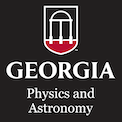This talk begins with a brief introduction of the standard model of particle physics and cosmology, which will be followed with a detailed description of the physics motivations and the experimental efforts at the Relativistic Heavy Ion Collider (RHIC) at Brookhaven National Laboratory. The focus of this talk will be on the recent result from the PHENIX experiment at RHIC and its implication for probing the initial temperature of the matter a few microseconds after the Big Bang.
Events Calendar View
-
Departmental Colloquium
Jan 27, 2011
Study of the Initial Temperature of the Big Bang with the Relativistic Heavy Ion Collider
-
CSP Lunch Seminar
Feb 1, 2011
Adsorption of polymers on nanowires: MC studies using generic coarse-grained models
-
Departmental Colloquium
Feb 3, 2011
Synthesizing arbitrary photon states
The favorite model systems of quantum mechanics, the two-level system and the harmonic oscillator, can be implemented in various experimental systems, but only become useful when their quantum states can be sufficiently well controlled. This is case for two level systems where any desired quantum state can be prepared with high accuracy, allowing them to be used as qubits. Harmonic oscillators, however, have only been prepared in certain types of quantum states. Number states, for example, have remained elusive.
I will demonstrate the generation of number states [1] and arbitrary superpositions of them [2] in a microwave oscillator. We use the precise control over a superconducting phase qubit to transfer microwave photons into the resonator, one at a time [3]. This protocol allows us to create arbitrary quantum states of the photon field, up to approximately 10 photons, limited by decoherence. We analyze the prepared states by mapping out their Wigner function, a full description of the quantum state of a resonator in phase space, equivalent to its density matrix. The figure shows the Wigner function of the state |0> + i|3> + |6>.
[1] Max Hofheinz et al. Nature 454, 310-314 (2008)
[2] Max Hofheinz et al. Nature 459, 546-549 (2009)
[3] C. K. Law and J. H. Eberly, Phys. Rev. Lett. 76, 1055-1058 (1996) -
CSP Lunch Seminar
Feb 8, 2011
Cloudy: A brief introduction and new directions
-
NanoSEC Seminar
Feb 9, 2011
Thermoelectric Research at Nanoscale
By converting waste heat into electricity through the thermoelectric power of solids without producing greenhouse gas emissions, thermoelectric generators could be an important part of the solution to today’s energy challenge. There has been resurgence in the search of new materials for advanced thermoelectric energy conversion applications. In this talk, I will present our recent progress on thermoelectric research such as thermoelectric transport in PbTe nanostructures, pressure-induced
enhancement of thermoelectric performance in PbTe, SnTe, GeTe materials, strain engineering in graphene sheets and nanoribbons, as well as recent development of thermoelectric theory. -
NanoSEC Seminar
Feb 9, 2011
Nanoscale Science&Engineering at Oxide-Oxide Interfaces
The unique characteristics of the outer d electrons lead to an extraordinary range of structural and electronic properties for transition-metal oxides. The interface between two transition-metal oxides is of significant interest in electronics and spintronics. Effort has been focused on the growth of atomically sharp interfaces between these oxides. However, an atomically sharp interface does not necessarily imply electronic abruptness. It is important to investigate the electronic transition at these oxide interfaces. In this talk, I will present our work on two types of oxide-oxide interfaces. For one type of interface, antiferromagnetic and insulating NiO and CoO thin films were grown on ferromagnetic and metallic Fe3O4 single-crystal substrates by molecular beam epitaxy (MBE); for the other type of interface, perovskite EuTiO3 thin films were grown on perovskite SrTiO3 single-crystal substrates by pulsed laser deposition (PLD). Electronic states at the buried interfaces were probed either by photoemission
spectroscopy (PES) or by electron energy loss spectroscopy (EELS) based on Scanning Transmission Electron Microscopy (STEM).
Page 17 of 121, showing 6 records out of 723 total, starting on record 97, ending on 102


